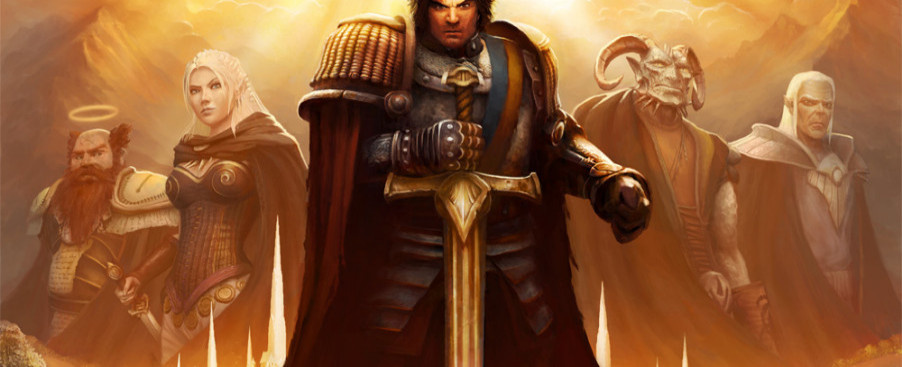Age of Wonders III Previews
-
Category: News ArchiveHits: 1830

We have rounded up a couple of previews for Age of Wonders III, just as we get closer and closer to its projected late March release window.
Rock, Paper, Shotgun:
There are three options when starting a new game, all of which branch out into more complex choices. First of all there are the campaigns, acting as both tutorial and long-form narrative. Hand-crafted maps, scripted events and paragraphs of po-faced fantasy stories await. I skipped through most of the story, partly because I couldn't find a way to read the slow-scrolling text at a faster clip and had to endure it at the pace of the voice-over, and partly because it's about an orc and an elf who don't like one another very much.
It's probably fine but I felt like I'd have to settle in for the long-haul to hear the whole saga, and I was playing for the turn-based strategy rather than the turn-based storytelling. The first campaign, which initially focuses on the new rogue/assassin skillset, is a solid introduction to the game. It swiftly displays the finer points of the sensible and attractive user interface, and by the end of the first scenario, it's served up a steaming mugful and slipped something warm and fuzzy onto your feet. Like I said it's all very comforting.
That's not to say the campaign is a walk in the park magical glade. Combat can be punishing if an army arrives without having properly prepared for the engagement. Send a gang of your toughest warriors to seize a castle and they're likely to be clobbered into submission by missile weapons before they reach the gates. The key, on both the strategic and tactical maps, is flanking.
Attacking enemies head-on gives them the opportunity to strike back at full strength, but it also turns them in the direction of the assailant, setting them up for assaults from another angle. That's during the up-close skirmishes but the process of moving armies into position for combat also highlights the importance of positioning. Using the '˜adjacent hex rule' previously seen in the series, an army will be joined in combat by any friendly units in neighbouring spaces, and will fight against any armies adjacent to the one that it attacked. This supports and encourages intelligent placement of fortifications and cities, and means that the approach to a battleground can be as important as the stacks of units thrown at it.
IGN:
As someone who'd enjoyed the older Age of Wonders titles, I was pleasantly surprised by how directly this fourth installment is descended from them, despite a full decade passing. The storyline of rampaging Humanity pushing Elves and other races out, which always tonally reminded me of Tolkein's Silmarillion, remains. (Happily, the evil demonic dimension used by Shadow Magic is long gone, leaving the more compelling political intrigue behind.) Even better, some of the great music of the original Age of Wonders has been remixed and put to use here. Age of Wonders III plays very much like its predecessors, which themselves were considered direct spiritual successors to Master of Magic. And these, as mentioned, played like a fantasy Civilization. You start with a single city, explore a map, research new powers/tech, build units, and take over the world. The biggest difference between the conventional fantasy strategy game and its historical inspiration, beyond the setting, is tactical combat. Throwing down in Age of Wonders III means having Elven archers back up Dwarven Pikemen, while heroes and mages cast spells. The inclusion of tactical combat may seem like a good idea, but dividing a game into two equal modes can backfire if one half isn't as good, or takes too long, then it can feel like a chore, as was often the case for me with the tactical combat in Master of Magic and Fallen Enchantress. But Age of Wonders III actually has the reverse problem: its tactics are a blast, while the strategic side suffers.

